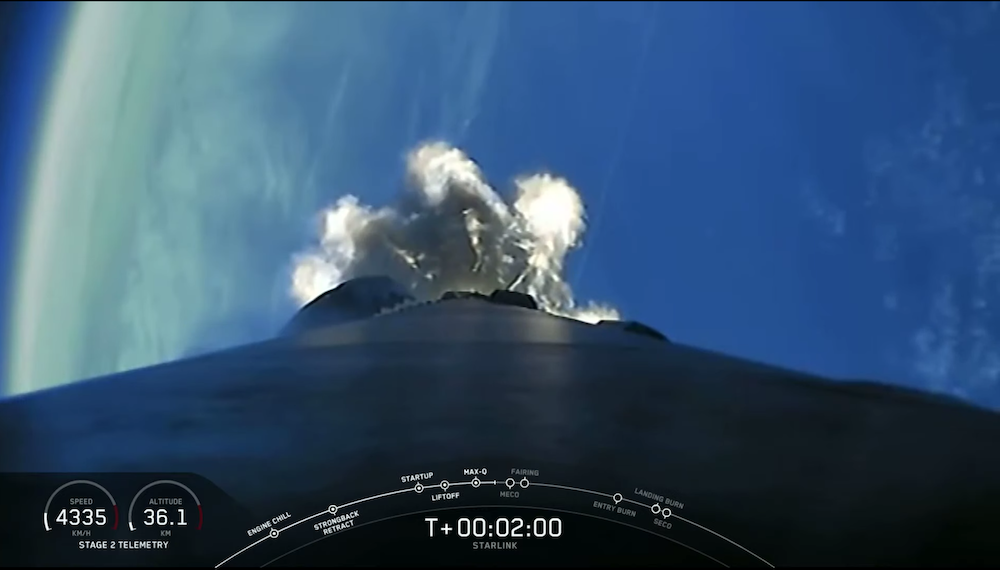
WASHINGTON — SpaceX successfully launched 60 satellites for its Starlink broadband constellation March 18, but failed to recover the rocket’s first stage, marking the company’s second consecutive booster miss on a Starlink mission.
The Falcon 9 rocket lifted off at 8:16 a.m. Eastern from Cape Canaveral Air Force Station in Florida and deployed the satellites into a 221-kilometer low Earth orbit about 15 minutes later. One of the nine engines on the rocket’s first stage shut down prematurely during ascent, SpaceX CEO Elon Musk tweeted after the mission.
The engine shut down didn’t affect orbital insertion, he said. Musk did not address if the engine outage was influential in SpaceX’s inability to recover the booster, which was completing its fifth reflight — the highest SpaceX has attempted. Musk said a “thorough investigation” will be needed before SpaceX’s next mission.
SpaceX previously planned to launch its latest Starlink satellites on March 15, but aborted the launch immediately after engine ignition due to what SpaceX described as “out of family data” during an engine power check.
The launch Wednesday was SpaceX’s first to use the same Falcon 9 booster for a fifth time. SpaceX used the same booster to launch 10 Iridium Next satellites in July 2018, Argentina’s Saocom-1A satellite in October 2018, the Indonesian Nusantara Satu satellite in February 2019, and the second dedicated Starlink mission in November. The company has designed Falcon 9 first-stage boosters to complete 10 flights each.
SpaceX tweaked the mission profile for Starlink launches starting with its Feb. 17 mission, dropping off 60 satellites in an elliptical orbit rather than a circular one, to reduce the load on the rocket and ease booster recovery. Neither mission using that modified profile has been successful, however.
SpaceX did successfully recover a booster in between Starlink missions, landing the first-stage used for NASA’s CRS-20 space station resupply mission March 9.
SpaceX’s March 18 launch did successfully reuse payload fairing halves from a Starlink mission last May. The company said it retrieved the fairing halves again, but by pulling them out of the ocean instead of catching them during descent with the boats “Ms. Chief” and “Ms. Tree,” which are outfitted with large catcher’s nets.
SpaceX has now launched 362 Starlink satellites, counting two demonstration spacecraft in 2018. The company said it will test the latest 60 satellites at their drop off altitude before using electric propulsion to raise them to their target 550-kilometer orbit.
SpaceX is building and launching a constellation of up to 12,000, and potentially even 42,000, satellites for global internet connectivity. Musk said at the Satellite 2020 conference that Starlink is designed to serve the 3-4% of the population that is most difficult to reach. Musk said SpaceX is not thinking about spinning off Starlink as a separate business.
https://news.google.com/__i/rss/rd/articles/CBMiYWh0dHBzOi8vc3BhY2VuZXdzLmNvbS9zcGFjZXgtbGF1bmNoZXMtc3Rhcmxpbmstc2F0ZWxsaXRlcy1taXNzZXMtYm9vc3Rlci1sYW5kaW5nLWZvci1zZWNvbmQtdGltZS_SAQA?oc=5
2020-03-18 13:46:52Z
52780669171796
Bagikan Berita Ini














0 Response to "SpaceX launches Starlink satellites, misses booster landing for second time - SpaceNews"
Post a Comment